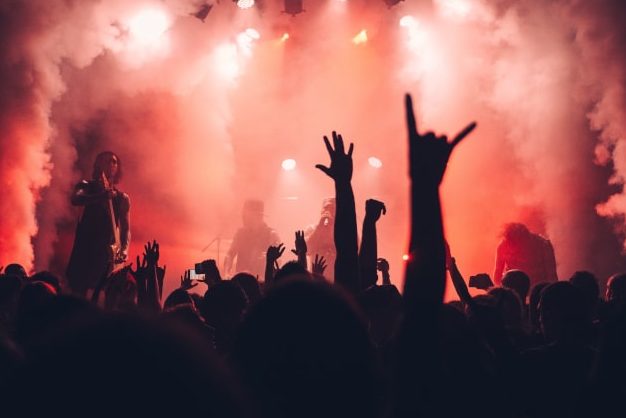A common problem among weightlifters, bodybuilders, and athletes is striking the balance between life and the gym. Most people want to enjoy their lives but for those who make their physique and fitness a priority, going out on weekends often means sacrificing calories, sleep, nutrition, optimal hormones, health, time, training, and more.
To advocate for fitness, one would discourage partying. However, to advocate for an enjoyable lifestyle, one might stress the need for a social life and a broad range of experiences not limited to moving weight and tracking meals.
Thus, the problem is created: how does one find the perfect balance between seemingly polar opposite lifestyles?
The Two Styles of Life
While fitness requires dedication, adherence to diets and macros, hours of training, optimal hormone levels, and sleep; going out on weekends can at times correlate with consumption of excess calories, hours of dancing and jumping around, consumption of alcohol, and late nights.
You go to the gym, you train, you eat enough calories, you stretch, then you go out and upset all effort you put in earlier in the day by drinking and staying out too late.
This is a recurring theme for many people and trying to juggle these two styles of life can make it so you experience the worst sides of both worlds: less results from the gym and less recreational value when you’re out because of guilt.
The objective when trying to find the balance is to seek the best of both worlds that do not cause any negative overlap with each other.
Best Approach To Balance
Partying while also trying to keep results from the gym un-impacted can be done. For this to be accomplished, knowledge of how everything can potentially impact the way your body functions is necessary.
Are there substances that are safe to use, have no side effects, no interference with training the next day, and no overall impact on recovery and hormones?
Short answer: No.
There is not a perfect chemical compound that’s free of hangovers, doesn’t impact the gym, doesn’t mess up sleep, and doesn’t impact blood flow. The closest substance that fits this category is marijuana due to its lack of calorie content and relatively no impact on the body’s energy use. However even MJ has been found through some studies to elevate estrogen and decrease serum testosterone. Psychedelics also would potentially fit this category however they’re barely fit for casual recreation and going out, excluding them from being assessed as fully as substances like alcohol and nicotine.
Now that almost all drugs ruled out for being free of a negative impact on building muscle, the philosophical question of gains in the gym vs. life experience is still left. The answer to this question is that full education of the effects of substances and going out allows optimal use tailored to the individual.
Alcohol, Nicotine, and Weed
A key point to be aware of is that alcohol consumption decreases testosterone and inhibits protein synthesis. Substances in the class of stimulants also need to be approached carefully due to their capacity to put the body in a catabolic state. Other classes of party drugs though like weed or psychedelics (not to necessarily advocate their use) have less of a severe effect, making them overall more optimal strictly in the regard of what’s best for training and results.
Nicotine, a stimulant, mostly has a negative effect depending on method of consumption. Smoking cigarettes has a major negative impact on circulation primarily due to two chemicals: nicotine and carbon monoxide. Cigarettes also have an adverse effect on hormones by increasing cortisol and prolactin. Both cortisol and prolactin lower male sex hormones, such as testosterone, making cigarettes harmful hormonally and in the interest of building muscle.
Vaping nicotine removes carbon monoxide from the equation but still harms blood vessels and reduces the amount of oxygen in the blood which the body depends on for muscle growth. This is not to say that a few hits from en electronic cigarette is going to leave you with the physique of a phasmid but it’s undoubtedly not a good drug to use habitually.
Pills and Lines
If you frequent festivals, or perhaps just enjoy local dance clubs, you probably are aware of the lure of orange teslas and red supremes. If not, good, but if so there are several negative effects from MDMA that relate directly with fitness and reaching weightlifting goals.
Putting aside the well known ugly side-effects of MDMA abuse that result in depression, anxiety, general apathy and earned the title “suicide Tuesdays” for the day of the week following Monday, there are also consequences to your physique and muscle mass.
The primary negative effect from MDMA (ecstasy) on your body composition and results from the gym is how it changes the body’s energy mechanisms. MDMA is a phenylethylamine putting it in the same class as meth and amphetamine. Drugs in this category have serious effects on the CNS (central nervous system), raising heart rate, elevating blood pressure, and accelerating cardiac output (the amount of blood pumped out from the heart per minute).
These effects will pull water out of the body and suppress the appetite, leading to weight loss and catabolism. Rapid weight loss will cause muscle wastage, as the body uses muscle for energy depending on how much is eaten (which is likely to be minimal due to a much lower appetite) and activity levels.
A second common party drug is cocaine. Just like with pills, cocaine is a stimulant and use will result in a suppressed appetite, dehydration, increased heart rate, and likely muscle wasting. Unlike MDMA, however, cocaine effects the brain differently with a more direct affect on dopamine uptake as opposed to serotonin, although it reduces uptake of serotonin and norepinephrine also.
After periods of cocaine use due to how it affects dopamine uptake, dopamine receptors are down-regulated. This is harmful for weightlifting and maintaining muscle because dopamine is crucial for healthy testosterone levels and motivation. Less testosterone will result in less muscle able to be built and maintained, and less motivation will result in lower quality workouts, creating a downward spiral robbing you of your potential as a lifter.
Summary
Knowing how these various substances affects your physique and gym results, you now have the liberty to choose your source of recreation on weekends in full knowledge of the risks vs rewards of your behavior.
There is nothing wrong with being sober on a night and coming back home before the early hours of the next day. Simply going out does not have any negative direct effects on fitness, besides maybe the opportunity cost of time, but eventually a more experimental and unruly lifestyle will likely take you down the road of excess so it is vital to be aware of the price of these decisions on lifting and health.
The balance usually is found when going out 1-3 days a month and lifting at least 4-6 days a week. These numbers can vary a good deal based on the individual but tend to allow the best of both worlds to be experienced without having fun bleeding over into making gains.
For more on lifestyle and fitness, such as how sex affects men’s hormones and whether good physiques matter to girls, click here.







